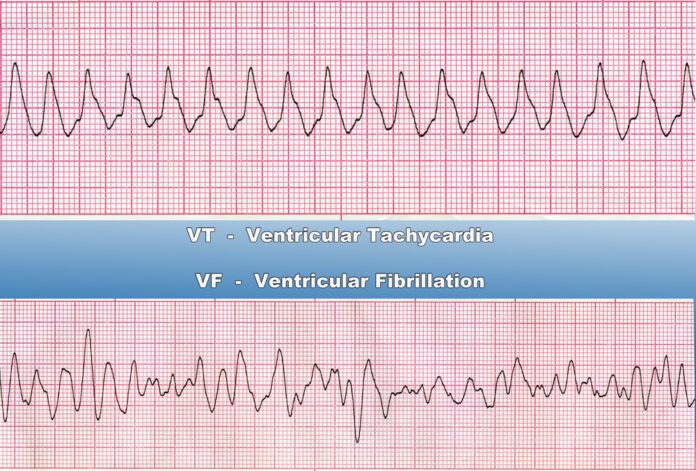Overview Of Ventricular Tachycardia
Ventricular Tachycardia (VT) acts as sharp increase in heartbeat from the lower ventricles, starting at about 100 beats per minute.
Commonly Associated With
V tach; Wide-complex tachycardia; Tachycardia – ventricular
Causes Of Ventricular Tachycardia
VT is a pulse rate of more than 100 beats per minute, with at least 3 irregular heartbeats in a row.
Ventricular Tachycardia starts with at lest 3 broken consecutive heartbeats that are over 100 beats per minute.
The condition can develop as an early or late complication of a heart attack. It may also occur in people with:
- Heart failure
- Cardiomyopathy
- Myocarditis
- Heart surgery
- Valvular heart disease
- No other pre-existing condition
Scar tissue can also form in ventricle muscles days to years after a heart attack. This can then lead to ventricular tachycardia.
VT can also be caused by:
- Changes in pH levels (acid-base)
- Changes in blood chemistry (such as a low potassium level)
- Anti-arrhythmic drugs (used to treat an abnormal heart rhythm)
- Or a ack of oxygen
Symptoms Of Ventricular Tachycardia
You may show symptoms if your heart rate in an episode lasts longer than a few seconds or is extremely fast.
Symptoms may include:
- Lightheadedness or dizziness
- Sensing the feeling of your heartbeat (palpitations)
- Shortness of breath
- Chest discomfort (angina)
- Fainting (syncope)
In some cases, there are no symptoms. Also, symptoms can stop quickly.
Exams & Tests
A health care provider will look for a:
- Rapid pulse
- Absent pulse
- Normal or low blood pressure
- Or a loss of consciousness
Tests that can detect VT include:
- Intracardiac electrophysiology study (EPS)
- Holter monitor
- ECG
- Or a Rhythm monitoring with a loop recorder device
Treatment Of Ventricular Tachycardia
This all depends on the type of heart condition a person has and their symptoms.
If someone with VT is in distress, they may require:
- Medicines (such as lidocaine, procainamide, sotalol, or amiodarone) given through a vein
- CPR
- Cardioversion electric shock
- After an episode of VT, future professional intervention needs to take place.
Use prescribed oral medicine for long-term care. However, these drugs may have strong side effects. These are since prescribed less frequently, as current treatment develop.
Ablation is a procedure that destroys the heart tissue that causes abnormal heartbeat. However, this is a serious procedure.
An implantable cardioverter-defibrillator (ICD) can also help. This is an implanted device that detects any rapid or life-threatening heartbeat. This is an arrhythmia. If this happens, an implanted ICD quickly sends an electrical shock to the heart. This will then change heart rhythm back to normal. This process is defibrillation.



